Originally posted in July 2009 with a major update in December 2012
Place: Metropolitan Theatre / Metropolitan Entertainment CentreAddress: 281 Donald Street (Map)
Architect: C. Howard Crane (Detroit)
Contractor: Alex McDonald (Vancouver)
Interior Designer: Theodore Jagmin (Detroit)
Opened: January 2, 1920
Cost: $300,000
Source: Toronto History on Flickr
After relocating the headquarters of their theatre chain from the U.S. to Toronto in 1915, the Allen family went on a Canadian expansion spree.
In November 1917 their new, luxurious flagship theatre opened in downtown Toronto. Designed by Detroit architect C. Howard Crane, who is credited with over 300 theatres around the world, it was used as the prototype for theatres in Vancouver, Calgary, and Winnipeg.

April 2, 1919, Manitoba Free Press
Between 1917 and 1919 the Allen chain purchased a number of existing Manitoba properties. In July 1917 Brandon's Palace Theatre was renovated into an Allen Theatre and in Winipeg they took over the Province, Dominion, Bijou, Gaiety and Rex.
In May 1918, the company was constructing smaller theatres in Edmonton and Regina when word came out of Toronto that Winnipeg would be next in line. At the time J. J. Allen would only say "The site .for the new Winnipeg theatre has not yet been decided upon. Although, several central locations are under consideration.” (May 28, 1918, Manitoba Free Press.)
April 12 1919, Manitoba Free Press
In April 1919, the company announced that it had chosen a site on Donald Street and that Herb Gage, Allen's advance man for Western projects, would move here from Regina to oversee the planning and construction of the $300,000 structure. To help finance the project "Allen's Theatres Winnipeg Ltd." was formed and sold $200,000 in shares.
Construction was delayed due to labour strife that culminated in the Winnipeg General Strike. As soon as it was announced that the strike would be called off, Gage put things in motion and construction began on June 27, 1919. it was Winnipeg's first major post-strike project.
In order to meet the original construction deadline of the end of 1919, two shifts of construction workers were hired. By August things were on track and contracts for interior work were let. By October the exterior work was near completion and three shifts worked day and night to complete the project.
Things were set for a Christmas Day opening with one major exception: the 2,000 theatre chairs had not arrived! They had been shipped from Minneapolis but went missing en route to Winnipeg. Opening night was pushed back to New Year's Eve, then into January, while the search went on.
Company president Bernard Allen, who was visiting the city in advance of the opening, dispatched Herb Gage, now supervisor of all of Allen's Canadian construction projects, to Minneapolis to purchase more chairs. While delayed at small town in rural Minnesota, Gage looked out at the surroundings and noticed some boxcars sitting on a siding. He checked the numbers and it turned out that they were the ones that contained the Allen Theatre's chairs.
The chairs were soon back on track and a new opening date of January 2, 1920 was announced.
Source: (The Year Past 1986)
Though it replicated the Allen's 1917 flagship Toronto theatre, the company's continued financial success and the introduction of new technologies in the years since, were incorporated design to make it the Allen's new standard in luxury theatres. In fact, Parks Canada considers it "Canada's first movie palace."
Moviegoers arrived at the theatre protected from rain and snow by the marquee that ran the length of the building. The ticket booth and lineup area was located inside. Beyond that was the main lobby.
The 2,000 seat hall had two floors, a modification on the other Western Allen theatres. The main floor, which held vast majority of the 2,000 seats, offered roomy, oversized chairs covered in leather. The second floor mezzanine had a large lounge area outfitted by Eaton's with plush carpets, couches and settees. This led to a small balcony fronted by a series of eight loges with wicker chairs.
Technological advances included a new style of ventilation system that cost $52,000, ($635k in 2012 dollars.) There was an oil heating system fed by an 8,000 gallon fuel tank buried under the back lane that eliminated the need for coal. The cooling of the building was done geothermally.
January 2, 1920, Manitoba Free Press
Particular attention was paid to the lighting. The hall's massive dome light was fitted with red, blue and amber bulbs that reflected light down onto the audience to give a warm glow. All lights were set on dimmers so as not to suddenly come on or off, allowing eyes to adjust to the change. Aisle chairs had a light built into the underside of the armrest to provide floor lighting.
The lights were never completely turned out, even during the film, which offered safety for workers and " ...complete protection from the 'dark houses' that offer temptations." (January 1, 1920, Manitoba Free Press). A later Free Press story noted:
The indirect lighting is massive and handsome. The great high-air spaces give evidence of the broadness of vision in the designer. The rich but unobtrusive decorations, the hand-worked plaster ornaments, show the genuineness which has marked the entire progress of the work.
January 3, 1920, Manitoba Free Press
January 3, 1920, Manitoba Free Press
Doors opened at 7 p.m. on January 2nd, 1920 to a lavish affair. In attendance were company president Bernard Allen, his sons Jay and Jules, and a who's who of Winnipeg society. After a series of musical numbers it was time for speeches and ex-mayor Waugh declared: "It was buildings like this one which allowed the distinct difference between a town and a metropolis" (January 3, 1920, Manitoba Free Press, p.3)
When the formal part of the program ended it was time for a newsreel, a Mutt and Jeff short and the feature film "Upstairs" with Mabel Normand.
Music was an important part of a theatre in the days of silent film. The Allen boasted a large pipe organ, which hadn't yet arrived on opening night, and an orchestra pit for the 15 member Allen Theatre Orchestra.
The first conductor was 23 year-old Joseph Shadwick who, despite his age, was a popular feature on Winnipeg's musical scene. Son of violinist Philip Shadwick, he had been performing at recitals and winning national awards since the age of 8. He led the Allen's orchestra for at least a couple of years before moving on to a career that included being concertmaster for the London Symphony Orchestra and Royal Opera House in London. (Listen to his music here)
May 19, 1923, Manitoba Free Press
At the time of the Allen's opening there seemed to be no end to their growing empire. They operated over 200 theatres in North America and made forays into the British market. That quick growth, however, meant huge debts and within a couple of years the corporation began to fail.
In 1923, the Allen's declared bankruptcy. Famous Players Canadian Corporation stepped in and leased many of the Allen properties, eventually buying them.
Questioned as to why they chose to take over the Met, considering that it was just a block away from their own flagship theatre the Capitol, an official explained that the Allen always performed well and had introduced a number of innovations to the theatre market that had been rolled out across the country.
June 23, 1923, Manitoba Free Press
The change in ownership brought a number of other changes to the theatre. On June 23, 1923, it was closed for six weeks to be refurnished and redecorated. One of the major changes made was to refit the small stage area to allow for larger, live productions, thus making it a more versatile venue.
The theatre also needed a new name. For this, Famous Players teamed up with the Manitoba Free Press for a naming contest with a $200 grand prize. In just a month the paper received 43,100 entries that had to be sifted through !
The front runner was the Prince of Wales with 800 votes, but Mayor S. J. Farmer, who was one of the judges, pushed for Metropolitan which received 194 votes. He felt it was modern and reflected the growing city that the theatre was located in. He won over the other judges and the selection was sent to Famous Players in Toronto.
Each of the 194 winners received a cheque for their portion of the $200 and was hosted to a night at the theatre during the opening week.
"The Met" reopened on August 4, 1923 with a trombone concert by vaudeville musician Grace Brewer Allen and the feature film Circus Days.
October 25, 1928, Manitoba Free Press
The next big change came in 1928 when the Met was again closed and refitted with the Movietone Sound System which synchronized film with a sound track.
On October 26th at 6 pm it reopened to show Winnipeg's first "talking picture." The program consisted of a newsreel, comedy short and the feature film "The Street Angel". The film itself contained no dialogue, just a synchronized musical score.
In 1942 the theatre was closed for major renovations that included the replacement of those chairs that caused such a headache back in 1919!
The theatre remained a first-run movie house until November 1987 when Famous Players closed it in favour of their new tri-plex in Portage Place.
In 1990, the Amy Street Steam Plant, which provided heat to many of Winnipeg''s older buildings, closed and Famous Players declined to put a central heating system into the vacant building.
The Met became a National Historic Site in 1991 and became property of the city in 1996.
Over the years there have been a number of failed plans to revive the Metropolitan. They include:
1989 - Famous Players said that there were two groups negotiating a takeover to make it a dinner theatre venue. (April 13, 1989, Winnipeg Free Press)
1993 - The Historically Aware Theatre Arts Group wanted to purchase the Met and Capitol to create a theatre and a training centre for the arts (August 16, 1993, Winnipeg Free Press)
1996 - The owner of Mr. Canada, a local tour bus company, reached an agreement in principle with the Forks North Portage Corporation to take over the Met and Capitol as part of a "Nashville North" live music district. (December 6, 1996, Winnipeg Free Press)
1997 - The Friends of the Metropolitan Theatre wanted to turn it into a performing arts venue. (September 2, 1997, Winnipeg Free Press)
2005 - A group of investors wanted to create a Canadian Rock and Roll Hall of Fame ( Nov 13, 2005, Winnipeg Free Press) but that idea died the following year.
In 2007, the Metropolitan was sold to the CanadInns hotel company and initial work was done to to replace the heating system to save further deterioration. The following year the company purchased the Radisson Hotel that sits just east of the theatre, connected by the back lane.
In March 2009, CanadInns owner Leo Ledohowski told the Free Press that work would soon begin on a $13 million "super supper club" but it wasn't until 2011, after a $1.5 million city grant, that they announced detailed renovation plans along with drawings.
The Metropolitan Entertainment Centre, a restaurant, bar and meeting / banquet facility will open in December 2013.
This building history was created mainly from newspaper archives, using other online sources to confirm dates and facts, (which do vary from source to source.) If you have additional information or changes that you would like to suggest please let me know in the comments section or at "cassidy at mts.net"
Historic Building Links:
Metropolitan Theatre Historic Buildings Committee report (an excellent source on the architectural details and layout of the building)
Metropolitan Theatre U of M Building Index
Metropolitan Theatre Silver Screens on the Prairies (excerpt)
Metropolitan Theatre Heritage Winnipeg
Canada's first ornate movie palace Parks Canada
Then and Now Interior Photos YouTube
Canadian theatre design to 1950 Canadian Encyclopedia
Media:
Winnipeg's Met theatre set to reopen CBC (Dec 2012)
Old Met Theatre makes a comeback Winnipeg Free Press (Dec 2012)
Historic Met gets $1.5 m grant CBC (June 2011)
Met makeover about to begin WFP (Mar 2009)
Work underway on Met Theatre WFP (Dec 2007)
Sale of Met to CanadInns CanadInns News Release (Apr 2007)
Also see My Met Theatre Photo album
Photos:
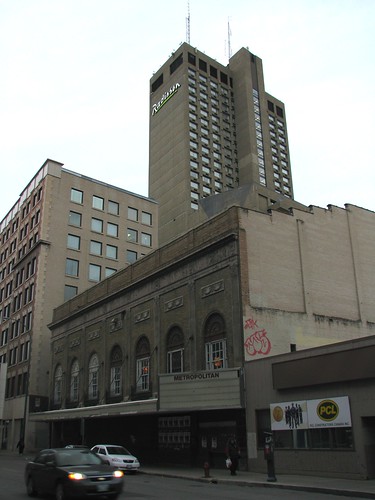
2008
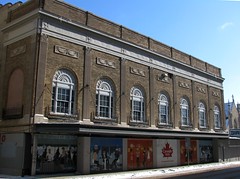










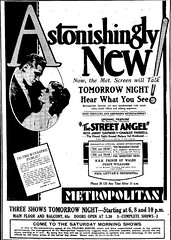





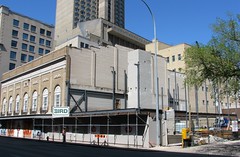
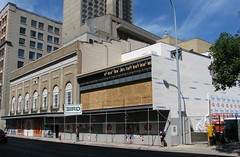
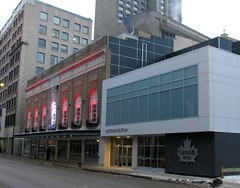
Modern pipes like PPR and HDPE offer excellent thermal insulation, reducing heat loss when transporting hot water and leading to energy savings. Due to their long lifespan and low pipes factories in Egypt needs, modern pipes are more cost-effective in the long run compared to traditional piping systems.
ReplyDelete